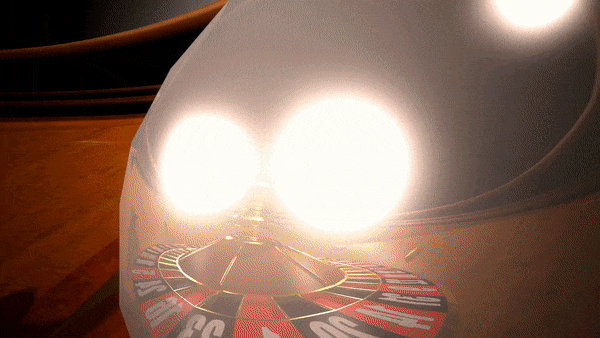
This Math Puzzle Looks Hard
Infinitely-sided dice produce a surprising result.
Here’s the question. You roll the three dice. You square the outcome of each die.
What are the odds that the sum of the three squares will be less than or equal to 1?These examples should clarify:

In the first example, we roll 0.98, 0.35 and 0.72. (We’ll stick to rational numbers to keep things clean.) The sum of the squares (0.98²+0.35²+0.72² =1.6013) is greater than 1, so this is a fail.
In the second example, we roll 0.89, 0.21 and 0.37. The sum of the squares (0.89²+0.21²+0.37² =0.9731) is less than 1, so this is a win.
Now, roll those magical mathematically perfect dice. How likely are you to win?
So you don’t accidently scroll down and see a spoiler, I will place this photo of my cat here.

Solution
Represent the space of possible outcomes within a 3-D cube.

Each point in this 3-D space takes the outcome of the dice as its x, y, z coordinates. Point A is (0.89, 0.21, 0.37). Point B is (0.98, 0.35, 0.72).
Now, let us include our condition: x²+y²+z²≤1.

Our condition — that the sums of the squares be less than 1 — gives us the set of points on the surface of, or contained within, a sphere of radius 1.
We can reframe our question as follows.
Given a random point within a 1×1×1 cube, what is the probability that it will fall within a sphere of radius 1, with a centre at one of the cube’s corners?We need the volume of that chunk (an eight) of the sphere, and the volume of the cube. Divide one by the other, and we’re done.

The odds are slightly in favour of the result being less than 1.
Isn’t it awesome that those infinitely-sided dice — which would each be spherical — produce π in this way?




